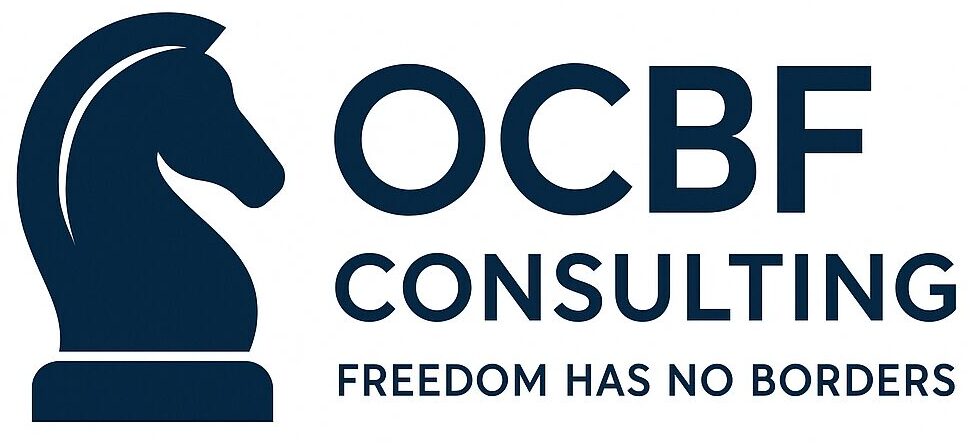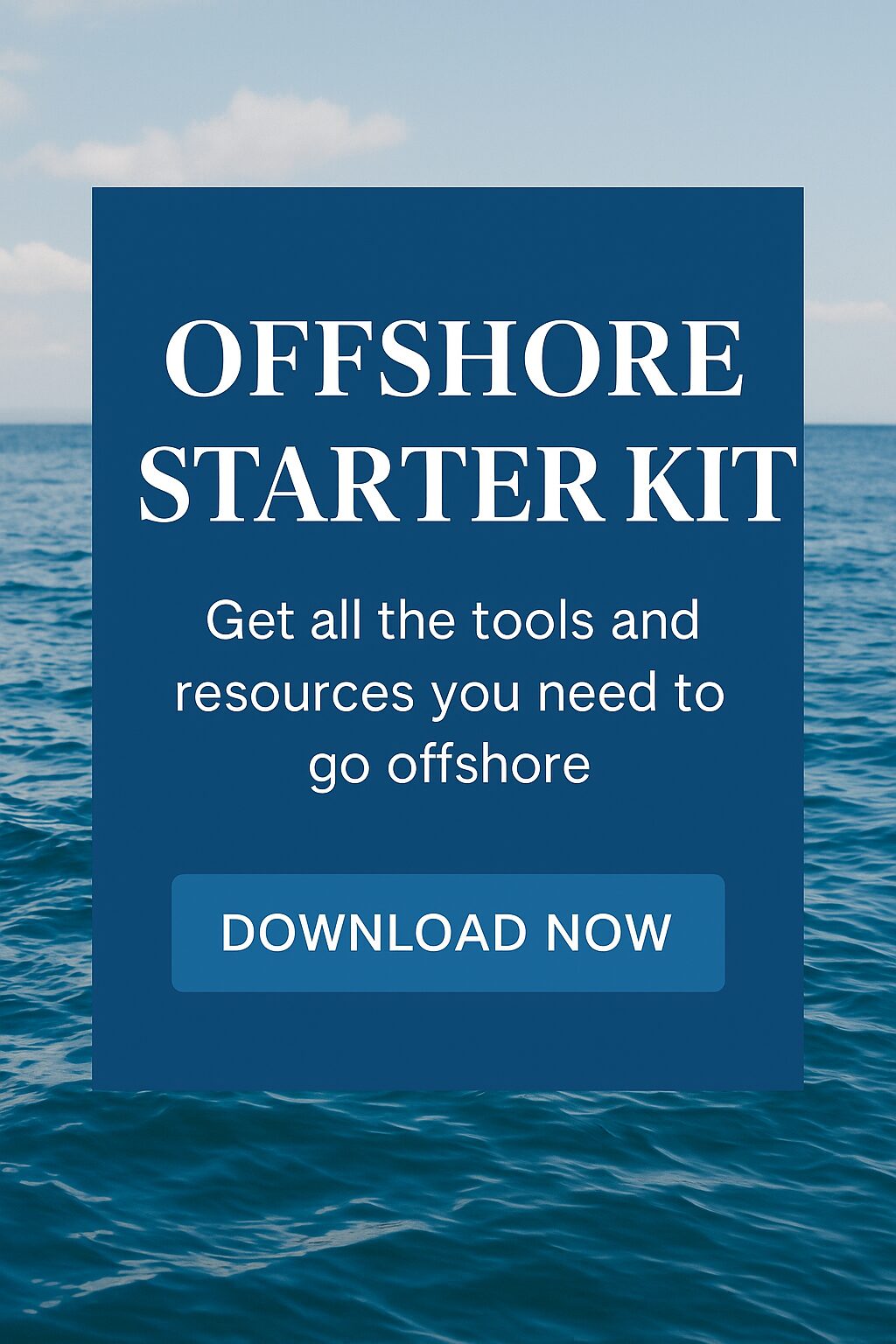When people talk about offshore asset protection, the conversation almost always begins with trusts. The Cook Islands, Nevis, Belize — those names have become shorthand for privacy, lawsuit resilience, and cross-border wealth management.
But in the shadows of that familiar world, another structure has been quietly gaining ground: the offshore foundation. For entrepreneurs, crypto investors, and globally mobile families, foundations offer a very different way to own and control assets — one that feels more corporate, more structured, and often easier to explain to a bank or regulator.
Still, confusion reigns. Many assume a foundation is just a fancy trust with a new label. It isn’t. The two are built on different legal DNA, and choosing the wrong one can mean the difference between bulletproof protection and an expensive paper tiger.
This is your plain-spoken, practitioner’s guide to understanding how they diverge — and when each shines.
The Two Building Blocks of the Offshore World
Before diving into the details, it helps to strip away the jargon.
A trust is not a company or a contract. It’s a relationship. One person (the settlor) transfers assets to another (the trustee) to manage for the benefit of others (the beneficiaries). The trustee becomes the legal owner of those assets, bound by fiduciary duty to act in the beneficiaries’ interests.
By contrast, an offshore foundation is a legal entity. It exists in its own right — like a company — but without shareholders. Instead, it’s governed by a charter and a council (sometimes called a board), guided by the founder’s wishes and the purpose written into its founding documents. It may have beneficiaries, but they don’t own anything directly.

The origin stories are also different. Trusts were born from English common law centuries ago, evolving from medieval land transfers into the sophisticated asset-protection tools used today. Foundations, however, come from civil-law traditions. Liechtenstein pioneered the model in the early 20th century, later adapted by Panama, Seychelles, and Nevis to serve international clients from both legal worlds.
Think of the trust as a handshake agreement made legal, and the foundation as a company with no shareholders but a soul.
The Seven Big Differences That Actually Matter for an Offshore Foundation vs Trusts
Now, let’s look under the hood. The differences aren’t just semantic — they shape how control, privacy, and protection actually play out.
1. Legal Personality
A trust has no independent legal existence. The trustee holds title to the assets and acts as their legal face. If someone sues, it’s the trustee who stands in court.
A foundation, by contrast, is a legal person. It can own property, open bank accounts, and sue or be sued in its own name. This makes it more recognisable in civil-law countries and sometimes easier to bank — especially where “trust” sounds exotic or suspicious to compliance teams.
2. Control and Governance
Trusts revolve around fiduciary duty. The trustee controls the assets and must follow the trust deed and any “letter of wishes” from the settlor. If the settlor interferes too much, courts may call it a “sham trust” and pierce the protection.
Foundations use a council or board to govern decisions. The founder may retain limited powers — perhaps appointing or removing council members — but too much control again risks undermining legitimacy. In Liechtenstein or Nevis, the law often allows a “supervisory board” or “protector” to add oversight without compromising independence.
3. Registration and Privacy
Trusts are typically private arrangements, sometimes registered only with the trustee company. Foundations must be registered in the jurisdiction of formation, but that doesn’t always mean public exposure. In Panama, for example, the charter is public, but the internal regulations and list of beneficiaries remain confidential.
4. Case Law and Precedent
The Offshore Banking Quick Start Guide is a 70+ page, no-fluff blueprint that takes you from “I don’t know what to do” to submitting a bank-ready offshore application with confidence.
Get the Offshore Banking Quick Start Guide ($9)
Trusts have centuries of court battles behind them — from English chancery courts to modern Cook Islands rulings that have repeatedly upheld asset-protection provisions. Foundations, meanwhile, are newer and have less litigation history, though the Nevis Multiform Foundation (which can morph between a trust, company, or foundation structure) has started to build some legal traction.
5. Forced Heirship and Firewall Protection
If you live in or have heirs in civil-law countries (France, Spain, much of Europe), “forced-heirship” rules may limit how you can distribute assets. Foundations were designed with this in mind: their civil-law DNA makes them easier to recognise locally.
Trusts fight back through “firewall statutes” — Cook Islands and Nevis both block foreign inheritance or divorce claims from being enforced against a domestic trust. Both methods work; they just use different legal shields.
6. Banking and Substance
Ask anyone who’s tried to open an offshore bank account lately: substance matters more than jurisdiction. Banks want clear governance and real decision-makers. A foundation’s board structure feels familiar to bankers and regulators. It looks like a company, complete with meeting minutes and resolutions.
Trusts can still pass compliance checks — but it often depends on the trustee’s reputation and the transparency of documentation.
7. Tax and Reporting
This is where most articles stop short — but it’s critical, especially for Americans.
The IRS treats most foreign trusts as reportable entities. US persons must file Forms 3520 and 3520-A annually, and trustees must disclose transactions and distributions. Failing to do so can trigger enormous penalties.
Foundations can be trickier: depending on their setup, the IRS may view them as either corporations or foreign trusts. A Panama foundation with beneficiaries and no active business might be treated as a trust; one holding subsidiaries or income-generating assets may look more like a corporation.
In other words: structure dictates treatment, not marketing language.
Trust vs. Foundation at a Glance
| Category | Trust | Foundation |
|---|---|---|
| Legal Nature | Relationship (no personality) | Separate legal entity |
| Key Roles | Settlor, Trustee, Beneficiaries | Founder, Council/Board, Beneficiaries |
| Control Mechanism | Trustee duties + Letter of Wishes | Charter + Regulations + Council |
| Public Registration | Usually private | Registered (some details private) |
| Case Law History | Extensive (Cook Islands, Nevis) | Limited but growing |
| Heirship Protection | Firewall statutes | Civil-law recognition |
| Tax Reporting (US) | 3520/3520-A filings | Variable: may be trust or corp |
| Bank Perception | Traditional, depends on trustee | Familiar, corporate-style governance |
Offshore Foundation vs Trust — What Fits Your Situation
The choice isn’t just legal. It’s psychological — about how much control you want to retain, how much risk you face, and where you actually live.
The Offshore Banking Quick Start Guide shows U.S. and international entrepreneurs which jurisdictions still open accounts, how to explain your business and crypto flows, and how to avoid the 12 instant rejection triggers that kill most applications.
Get the Offshore Banking Quick Start Guide ($9)
Imagine a few scenarios:
- The Entrepreneur in Texas: facing potential lawsuits and holding IP. A Cook Islands or Nevis trust offers proven case law and distance from US courts.
- The Family in Europe: heirs across Spain and Germany. A foundation suits civil-law recognition and estate planning across borders.
- The Crypto Investor: needs a structure that exchanges and banks understand. A foundation’s corporate personality usually wins that compliance battle.
- The Philanthropist: wants to enshrine purpose beyond life. A foundation’s perpetual life and council governance allow enduring missions without successor confusion.
If your goal is lawsuit resilience and legal precedent, a trust remains king.
If you want a self-contained entity with predictable control and banking ease, a foundation may serve you better.
The Governance Reality Check
Every structure looks perfect on a diagram until human nature gets involved. The fastest way to ruin both a trust and a foundation is to undermine independence.
A trust collapses if the settlor keeps calling the shots or instructs the trustee informally. Courts see through that. A foundation loses its shield when the founder signs cheques or acts as the de-facto manager.
I once reviewed a Nevis foundation where the founder insisted on personally authorising every transfer “for oversight.” On paper, it looked pristine. In practice, he was the controller — and any decent creditor lawyer could prove it.
Good governance isn’t decoration; it’s the legal oxygen that keeps the structure alive. Appoint independent council members or trustees. Document meetings. Keep minutes. Separate personal email from entity business.
Privacy without discipline is just paper.
Banking, Substance, and the Real-World Test
Banks and regulators no longer care about glossy brochures — they want substance. When you approach a bank with a trust, you’ll be asked: Who’s the trustee? Where is the trust administered? Is there local management?

A foundation, by comparison, presents itself as an organisation. The bank can review its charter, meet its council members, and tick off corporate KYC boxes. This familiarity often speeds approval.
But “substance” isn’t just about perception. It’s about demonstrating real management and control where the entity is registered. That means local records, professional administration, and genuine decision-making. Without it, tax authorities can “look through” the structure and claim residency where you live.
Substance has quietly replaced secrecy as the new benchmark of legitimacy.
The US Tax and Compliance Layer for Offshore Foundation vs Trusts
For Americans, offshore structures are only effective when transparent to the IRS. That might sound paradoxical, but it’s the reality of post-FATCA planning.
Trusts require annual 3520 and 3520-A filings if you’re a settlor or beneficiary. Those forms disclose transactions, income, and distributions. They’re paperwork-heavy but manageable.
Foundations can be murkier. Some tax advisors treat them as foreign corporations — triggering controlled-foreign-corporation rules and Subpart F income; others classify them as “foreign trusts” depending on who controls distributions. Either way, disclosure is essential.
The good news: both can be completely legal when done right. The bad news: the IRS penalties for missed filings are ruinous.
If you hold a US passport, your offshore structure is about compliance efficiency — not secrecy. Choose accordingly.
Cost, Setup Time, and Jurisdiction Picks
Money and time matter. You can form a Panama foundation in two weeks for around USD 3,000–6,000, with annual fees of about USD 1,000. Nevis sits a little higher but adds stronger asset-protection statutes.
Cook Islands and Nevis trusts remain the gold standard for resilience — typically USD 10,000–20,000 to establish, plus USD 5,000 + annual maintenance.
Liechtenstein foundations carry prestige but are heavily regulated and can exceed USD 20,000 just to form.
The rule of thumb: choose jurisdiction first for legal strength, not headline price. The wrong jurisdiction can undo every other advantage.
Common Mistakes That Destroy Good Structures
- Founder keeps signature rights — effectively nullifying independence.
- No clear purpose or distribution policy — leaving the council guessing.
- Using an unlicensed or unvetted service provider.
- Ignoring tax and reporting obligations.
- Mixing operating companies directly into asset-protection entities.
Even the best jurisdictions can’t save a badly executed plan.
The Hybrid Model — When You Might Use Both
At the higher end of wealth planning, professionals often blend both structures. A foundation might own the shares of a Private Trust Company (PTC), which in turn serves as trustee for multiple family trusts.
This “belt-and-suspenders” approach layers governance and ensures continuity. The foundation provides stability and purpose; the trusts add flexibility and proven legal precedent.
It’s complex, yes — but for multigenerational families or global entrepreneurs, it offers a way to unify different legal worlds into one coherent plan.
The Choice Behind the Paper
At heart, choosing between a trust and a foundation isn’t just about law — it’s about temperament.
A trust asks for faith: in your trustee, in centuries of precedent, and in the power of separation. It’s the quieter, subtler tool — invisible but potent.
A foundation, meanwhile, is tangible. It holds meetings, signs documents, and speaks the language of corporations. For founders who crave structure and visibility, that can feel safer.
In truth, both can work brilliantly — or fail spectacularly — depending on how you manage them. The best planners understand that asset protection isn’t about hiding; it’s about architecting control.
So when you next hear someone whisper about offshore trusts, remember their corporate cousin across the water. The foundation may not have centuries of case law behind it — but in the right hands, it can be every bit as powerful.
OCBF Consulting provides practical insights into offshore asset protection, privacy, and wealth planning. For deeper guidance, explore our Ultimate Offshore Guide 2025.










